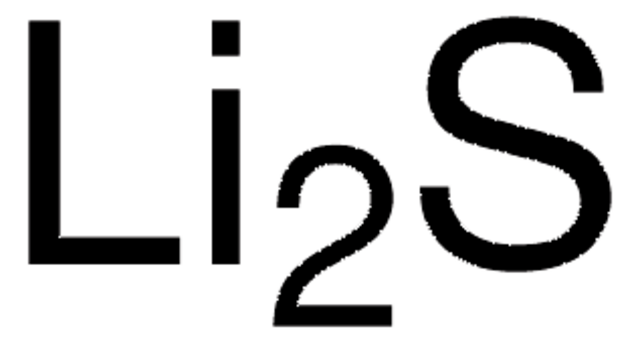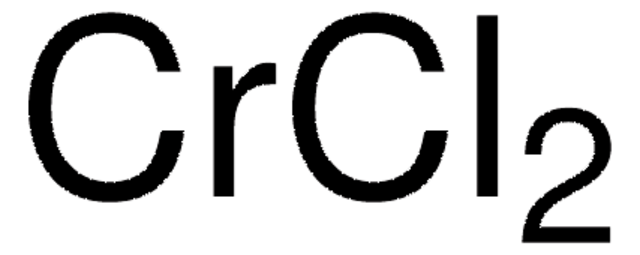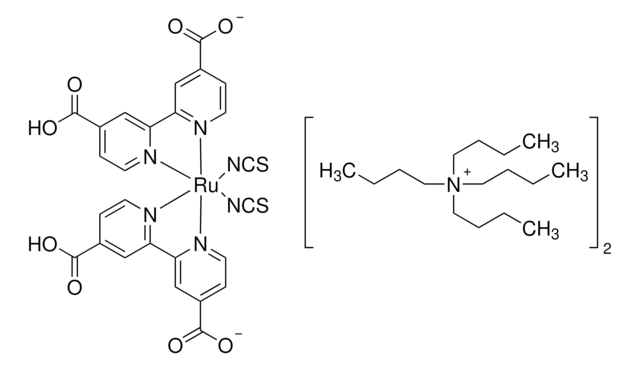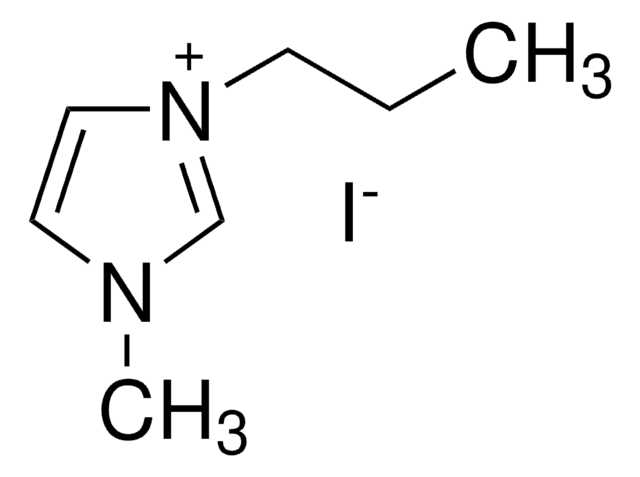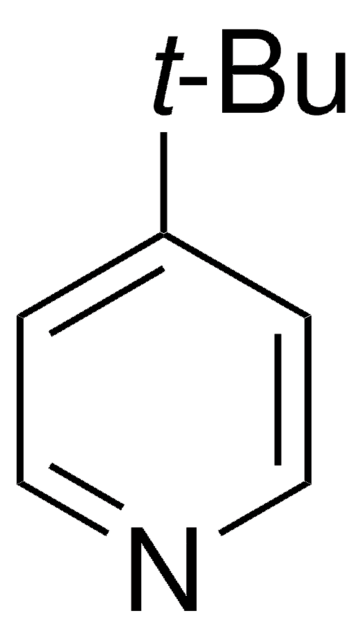Wichtige Dokumente
450952
Lithiumiodid
AnhydroBeads™, −10 mesh, 99.999% trace metals basis
Synonym(e):
Lithium monoiodide
About This Item
Empfohlene Produkte
Produktlinie
AnhydroBeads™
Qualitätsniveau
Assay
99.999% trace metals basis
Grünere Alternativprodukt-Eigenschaften
Design for Energy Efficiency
Learn more about the Principles of Green Chemistry.
sustainability
Greener Alternative Product
Verunreinigungen
≤15.0 ppm Trace Metal Analysis
Partikelgröße
−10 mesh
mp (Schmelzpunkt)
446 °C (lit.)
Dichte
3.49 g/mL at 25 °C (lit.)
Grünere Alternativprodukt-Kategorie
SMILES String
[Li+].[I-]
InChI
1S/HI.Li/h1H;/q;+1/p-1
InChIKey
HSZCZNFXUDYRKD-UHFFFAOYSA-M
Suchen Sie nach ähnlichen Produkten? Aufrufen Leitfaden zum Produktvergleich
Verwandte Kategorien
Allgemeine Beschreibung
Anwendung
Rechtliche Hinweise
Zubehör
Lagerklassenschlüssel
11 - Combustible Solids
WGK
WGK 3
Flammpunkt (°F)
Not applicable
Flammpunkt (°C)
Not applicable
Persönliche Schutzausrüstung
dust mask type N95 (US), Eyeshields, Gloves
Hier finden Sie alle aktuellen Versionen:
Besitzen Sie dieses Produkt bereits?
In der Dokumentenbibliothek finden Sie die Dokumentation zu den Produkten, die Sie kürzlich erworben haben.
Kunden haben sich ebenfalls angesehen
Artikel
Over the last decade, dye-sensitized solar cells (DSSCs) have attracted much attention because these unconventional solar cells exhibit high performance and have the potential for low-cost production.
Research and development of solid-state lithium fast-ion conductors is crucial because they can be potentially used as solid electrolytes in all-solid-state batteries, which may solve the safety and energy-density related issues of conventional lithium-ion batteries that use liquid (farmable organic) electrolytes.
Unser Team von Wissenschaftlern verfügt über Erfahrung in allen Forschungsbereichen einschließlich Life Science, Materialwissenschaften, chemischer Synthese, Chromatographie, Analytik und vielen mehr..
Setzen Sie sich mit dem technischen Dienst in Verbindung.
